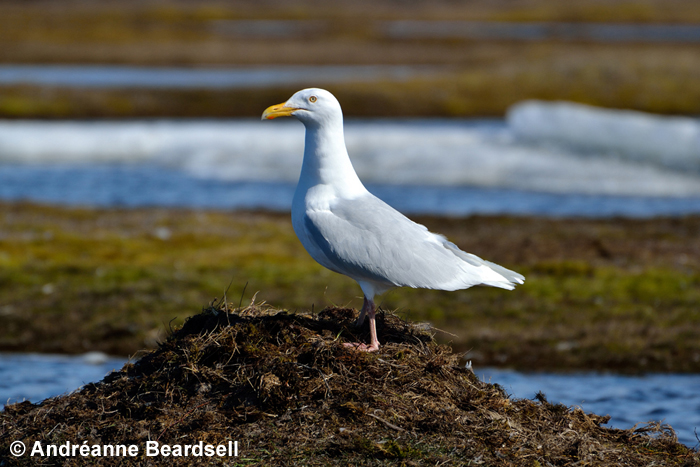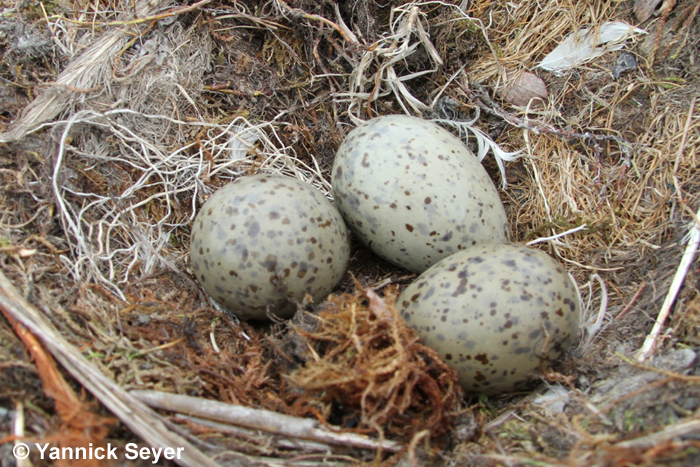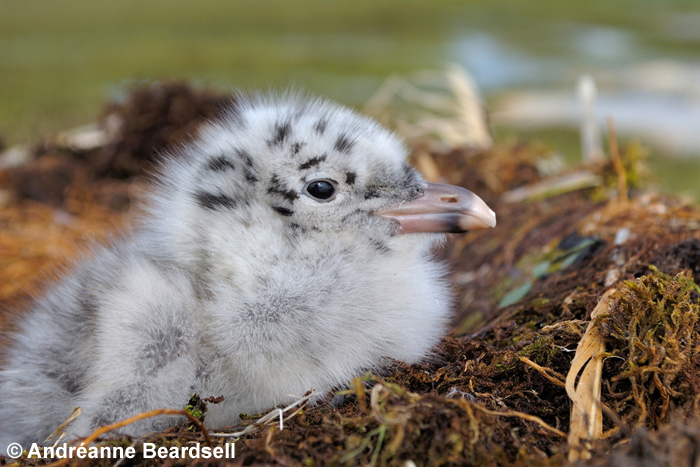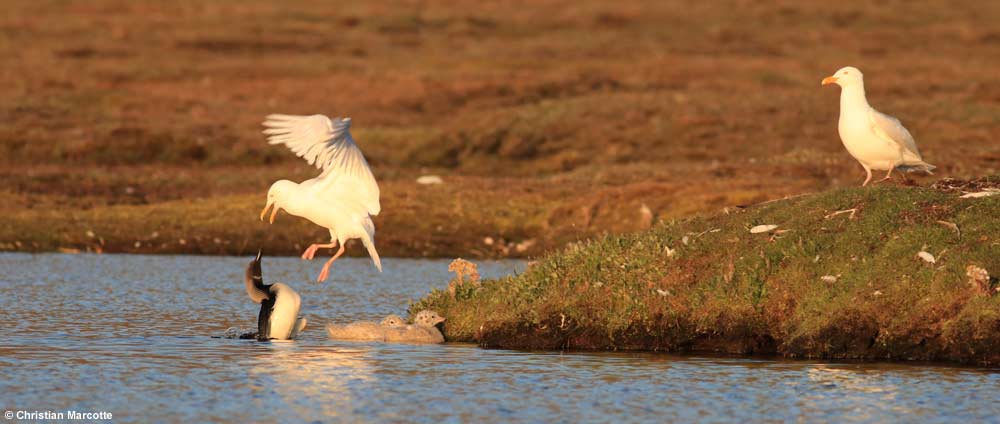The glaucous gull is a fairly abundant species with a circumpolar distribution. This migratory bird is present in the Arctic during the summer, but some individuals may stay in southern parts of the Arctic during the winter. Otherwise, it winters in eastern North America from the coast of Newfoundland and Labrador down to North Carolina, including in the St. Lawrence Gulf, and in western North America from Alaska all the way down to California. Although this gull generally breeds in colony on coastal cliffs throughout the Arctic, on Bylot Island it nests in a more dispersed fashion on small islands or the edge of freshwater lakes and ponds in wet meadows. The average gull nest density in this habitat of the Qarlikturvik Valley is 1.2 nests/km2.
Breeding ecology
The glaucous gulls reuse the same nests to breed year after year. Those nests are built from local vegetation to create a mound, sometimes up to 30 cm high or more. The female lays 2 or 3 greenish spotted brown eggs. The incubation period usually last 27 days and begins right after the first egg is layed. On average, laying occurs between 5 and 19 June and hatching happens within the first two weeks of July. For 42 to 50 days, the young gulls stay in or near the nest and both adults provide them with food and protection. During the breeding season, adults are quite aggressive. Whenever an intruder approaches their nest, even more than 100 meters away, they vocalize alarm calls and attack with a series of swift aerial dives and overflights. Both male and female take part in these attacks until the intruder moves away.
 |
 |
 |
Although the glaucous gull feeds on lemmings (see below), unlike many avian and terrestrial predators on Bylot Island, its presence on the breeding ground does not vary in response to the lemming abundance cycles. However, its hatching success (proportion of eggs that hatched) is reduced when lemming abundance is low. This is due to an increase in predatory activities from arctic foxes, jaegers and ravens on gull nests rather than to a low availability of food resources. Gull pairs benefit from breeding on islands because they offer a better protection again their main predator, the fox, even in years of low lemming abundance.
The full dataset of our gull nesting monitoring on Bylot Island is available on NordicanaD.

Food habits
The glaucous gull is a generalist predator, i.e. it feeds on a wide variety of prey. On Bylot Island, when lemming abundance is high, its diet is mostly composed of terrestrial prey (63%) and the rest is composed of aquatic prey (31% marine and 6% freshwater). However, when lemming abundance decreases, terrestrial prey drop to 50% of their diet, while marine prey increases to 43% and freshwater prey increases to 7%. Although the intake of freshwater prey is fairly limited, their contribution increases for gulls nesting further inland.
Like most avian predators, the glaucous gull regurgitates pellets to reject the non-digestible parts of their prey. The analysis of more than 1,000 pellets collected on Bylot Island revealed the origin of their terrestrial and aquatic prey. Indeed, the most abundant prey are greater snow geese and lemmings, mostly the collared lemming. The close proximity of the goose colony makes it a prey of choice for gulls. Eggs and young geese constitute most of the goose parts found in pellets, especially during the young gull rearing period. Before the hatch of gull eggs, geese account for a small proportion of the traces of geese in pellets. In years of high abundance of lemming, their proportion in the diet of gulls prior to hatching is greater than that of geese, while in years of low lemming abundance, the opposite is observed. After hatching, geese constitute the main prey in the diet of gulls. Aquatic prey found in the pellets includes marine invertebrates, fishes, and marine mammals. Among the other prey making up the diet of this generalist predator, traces of birds (e.g. ducks, jaegers, passerine birds, shorebirds), arctic fox and arthropods have been found. Given the diversity of breeding sites used by glaucous gulls, the exact composition of its diet varies between locations. The distance from the coast and the availability of local food resources are factors that affect its composition.
 | |
| Average percentage of food items found in regurgitated pellets collected at glaucous gull nests before and after hatching of chicks on Bylot Island during a year of low and high lemming abundance. Aquatic prey included fishes, marine invertebrates, and marine mammals. Other prey included birds other than geese, terrestrial mammals other than lemmings, and arthropods. Adapted from Gauthier et al. 2015, DOI: 10.1642/AUK-14-273.1. | |
| Rough-legged hawk | Lapland longspur |
